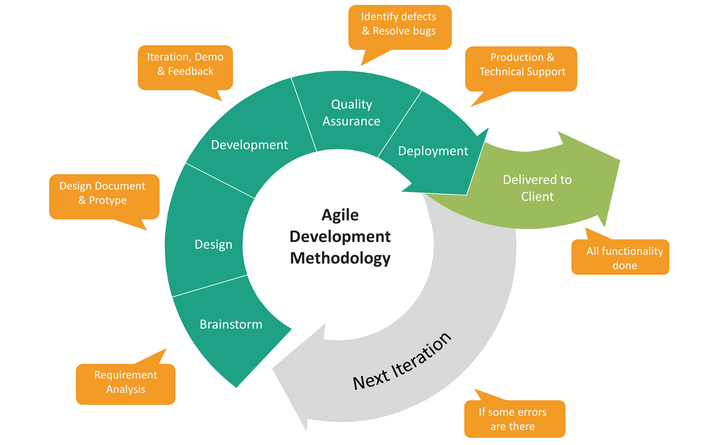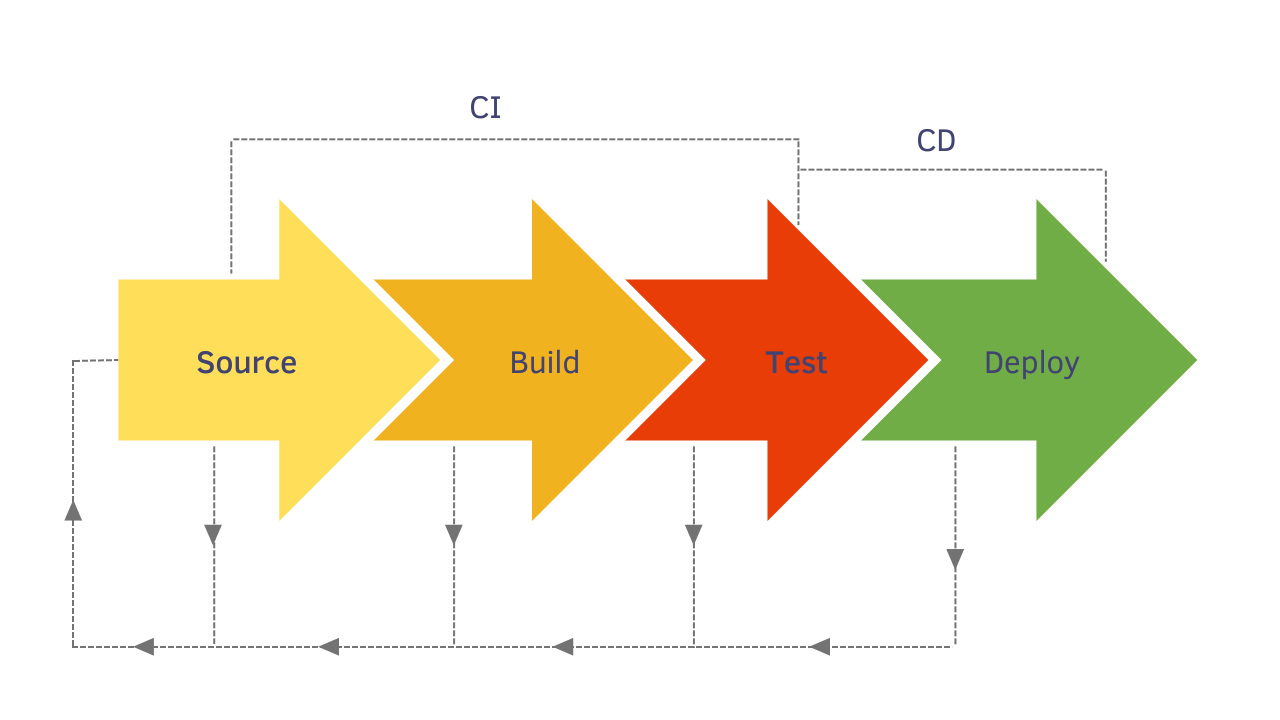Agile and DevOps—those are the buzzwords in the rapidly changing landscape of software development currently. These methods involve much focus on fast iteration, continuous delivery, and shared collaboration across the various development, operations, and testing teams. However, ensuring improvement in software quality within such a rapid development cycle can be hard. This is where test automation advantages in Agile come into play.
Understanding Agile and DevOps
Agile methodologies include Scrum and Kanban, holding on to the notion that working software must be delivered, released, and deployed incrementally in a sustainable way over short iterations. DevOps, in this respect, tries to obliterate any barriers that may be present between development and operations, therefore creating an environment in which every person feels they have a shared responsibility for the delivered software.
QA automation testing services are one of such very important activities in Agile and DevOps, which identifies and rectifies bugs at an early stage of development. But traditional manual testing may become a bottleneck in such rapid development environments, and this is where Agile and DevOps automation benefits come in.

Automation of testing is the process of employing tools and scripts to mechanize repetitive testing activities. Test automation makes it even more compelling in Agile and DevOps environments where working with large code changes is the order of the day.
Test Automation Advantages
Test automation in Agile and DevOps practices has many advantages. Some of the most important advantages are:
- Fast Feedback: It can run automated tests immediately; testing time is a few seconds. Therefore, developers receive feedback on the changes in the code in a very short time. This helps errors to be quickly identified and rectified, shortening the duration of development cycles.
- Better Test Coverage: Manual testing might not cover all functionalities in the assigned time. Automated tests can be engineered to cover a larger number of possible scenarios, which increases the quality of the software.
- More Accuracy: Human errors can easily creep into manual testing. While test execution is automated, the factor of human error will not be there to hamper accuracy. It ensures consistency of the testing exercise and hence an assured, predictable result of the testing exercise.
- Reduced Costs: The implementation of test automation has some upfront investment costs related to the activities of setting up. However, these costs are known to pay off in the long run. Automated tests can be reused across sprints and releases, thus saving time and resources from manual testing.
Agile and DevOps Integration
Test automation perfectly fits with Agile and DevOps methodologies. This is how:
CI/CD: In this pipeline, one attaches automated tests as a part of the build process. This will run the tests for each automatic code change commit, therefore providing immediate feedback about the change impact.

- Faster Releases: Automating the testing is equivalent to cutting a lot off your total testing time, resulting in faster release cycles. This moves new features and bug fixes into the marketplace more quickly for businesses.
- Increased Quality: With continuous testing, automatic tests can detect and rectify issues in the earlier phases of the development life cycle. This, in total, improves software quality while reducing the risk of critical bugs in production by many folds.
Popular DevOps tools like Jenkins, GitLab CI/CD, and CircleCI, offer good support in integrating test automation frameworks within the CI/CD pipeline.
Selection of Appropriate Automated Tests
Not all test cases are ideal candidates for automation. Some of the criteria that could be considered in automating tests are as follows:
- Complexity of the Test: Tests of great complexity that must have a high degree of user interaction or changes in data are highly likely to be very difficult in terms of automation and maintenance.
- Frequency of Execution: Tests that are performed quite often can only be optimized if they are automated, because automation will be picked for time and resource savings.
- Risk of Regression: Automated tests should be run to confirm the critical functionalities that may have more chances of regressing, owing to changes in the code.
Tools and Frameworks for Test Automation
Test automation tools and frameworks come in a variety of kinds to suit a range of needs and programming languages. The following is a short list:
- Selenium: The open-source framework Selenium is the most popular one for automating web applications across various browsers.

Cypress: It is also an open-source framework, though specifically designed for modern web applications. It provides a user-friendly interface and easy integration with JavaScript testing libraries.
Appium: Appium is an open-source framework for automating mobile applications running on both the Android and iOS platforms.
Robot Framework: Robot Framework is a keyword-driven automation framework, allowing test cases to be written in a human-readable format, thus being fit for purpose for persons who are not so good at coding.

Some of the reasons that could dictate the tool or framework to be used include:
- Project requirements and the application under test (whether web or mobile application, etc.)
- Expertise and development skills in the team
- Budgetary constraints
To decide on the right test automation tool for your automation strategy, you need to choose a test automation tool. Below is a selection matrix that will help compare some of the popular tools using key criteria:
| Feature | Selenium | Cypress | Appium | Robot Framework |
| Application Type | Web | Web | Mobile (Android & iOS) | Web, Mobile, Desktop |
| Open Source | Yes | Yes | Yes | Yes |
| Programming Language | Multiple (Java, Python, C#, etc.) | JavaScript | Multiple (Java, Python, Ruby, etc.) | Keyword-Driven (supports various languages) |
| Learning Curve | Steeper (requires programming knowledge) | Moderate (JavaScript experience beneficial) | Steeper (requires mobile testing knowledge) | Easier (suitable for testers with limited coding) |
| Community & Support | Large and active community | Growing community | Active community | Active community |
| Cost | Free | Free | Free | Free |
| Best suited for | Complex web applications, cross-browser testing | Modern web applications with JavaScript testing needs | Mobile app testing across platforms | Testers with limited coding experience, multi-platform testing |
Open-source frameworks like Selenium and Appium tend to be relatively more flexible and customisable, but also require more technical knowledge for setup and support. Commercial frameworks often add to feature sets and support but require a license cost.
Read: Key Benefits of Shift-Left Testing in Agile Development
Implementation Challenges
While the benefits of test automation are great, but the successful implementation will need a high level of planning and execution. Some possible challenges are:
- Initial Investment: Just like anything else, setting up a test automation framework requires an initial investment in terms of tools, training, and scripting effort. This can become a barrier, in particular for small teams with limited resources.
- Maintenance Effort: Automated tests have to be maintained all through and updated to come up to par with the changes in code and updates in the functionality of the application. This is a work that can consume a lot of time.
- Skill Shortage: Automated test development and maintenance would very often need a specific set of programming skills. Therefore, it won’t be easy to include those testers who have the required skills or prepare current testers to take over this role.
- Over-Reliance on Automation: Over-reliance on automated tests can lead to neglecting exploratory testing and other manual testing activities that are crucial for identifying usability issues and edge cases.
Here are a few strategies to surmount these challenges:
- Start Small: Automate some critical test cases first, then build out your automation suite over time as more time and resources become available.
- Prioritize Test Cases: Automate the most important tests, for example, the most frequently run regression tests and the core functionalities.
- Invest in Training: Ensure that your QA team is trained on tools in automation testing and the best practices. Also, consider teaming up with a QA Testing Services company in India, like many out there, to tap into expert help that will guide and support your setup for an automation framework.
- Selection of Right Tools: The tools should be selected based on ease of learning and maintenance, the skill set of the team, and the need of the project.
- Maintain Balance: Do not totally discard manual testing. Automate the repetitive tasks and retain manual testing for exploratory, as well as the user experience testing.
Case Studies
Case Study: E-commerce Automation Improves Testing Efficiency at Company X
- Challenge: The leading e-commerce company, Company X, dealt with long cycles of manual testing, which in turn affected its ability to keep up with more frequent product releases. Time-consuming manual testing efforts also had a risk of human error leading to rare regressions and corresponding deployments running late. Platform complexity was further pressing for an efficient and reliable testing approach.
- Solution: Company X adopted an end-to-end automation strategy. The team automatically orchestrated high-impact test cases using Selenium, coupled with a custom test framework. Some of these cases involved the process of searching for a product, shopping, and checkout. The tests were then integrated into the CI/CD pipeline, so with each code commit, testing was performed automatically and without any manual intervention, enabling instant feedback for the developers.
- Result: This amounted to an enormous cut in the time taken to perform manual tests, by over 60%, thus allowing much quicker release cycles. Automated tests guaranteed consistent and reliable execution, offering very little risk of regressions and much better software quality.
This further resulted in 75% less post-release defects, making the e-commerce platform much more stable and user-friendly. On the other hand, the freed-up tester resources shifted toward exploratory testing and evaluation of user experience, resulting in further improvement of the overall quality of the platform.
Case Study: Banking App Reduces Time-to-Release by Leveraging Automation at Bank Y
- Challenge: The leading financial institution, Bank Y, struggled to meet the problem of updating its mobile banking app promptly. Traditional testing, especially manual testing on many different devices and operating systems, was taking too much time. This, in turn, was a hindrance to the rapid release of new functionality, and thus was diminishing the ability to retain test coverage over the rapidly changing app.
- Solution: Bank Y’s methodology was using Appium, the open-source mobile app automation framework. They used Appium for the automation of critical user journeys and the bank’s app regression test cases for both Android and iOS versions of the app. The team integrated the automated tests with the bank CI/CD pipeline for automatic execution against a pool of virtual devices.
- Result: The time taken to test its mobile application was reduced by 50% through automation via Appium. With that, the release cycles were much higher in frequency, allowing them to deliver the new features in a much faster way. It is due to such automated testing that there was uniform and complete coverage of all the devices and platforms supported. Without this, the resultant improvement in the software testing for banking security and application would have remained unparalleled.
Bank Y testers automated those repetitive testing tasks, which allowed their testing resources to focus on security testing and performance optimization. This later, enriched user experiences using the mobile app more significantly. The faster releases helped the bank stay ahead of the competition by giving a cutting-edge mobile banking experience to their customers.
These case studies clearly present the tangible benefits of applying test automation for Agile and DevOps. Companies have been able to realize such benefits as faster releases, improvement in software quality, and reduced costs.
Best Practices in Test Automation
Below are the best practices to be followed to ensure your test automation effort is a success:
- Start with a Clear Strategy: Create automation goals and define the types of tests you would like to automate.
- Focus on Test Maintainability: Create clear, short, and modular test scripts that are self-documenting and easy to read and maintain.
- Version Control: Keep the changes to the automated tests tracked using a version control system, say Git. It will be easy to work together on the same code and make it possible to roll back changes when required.
- Facilitate Collaboration: Encourage developers and testers to collaborate at every step of automation.
- Continuously Improve: Rely on a regular re-evaluation of your automated tests and adjust your strategy according to the project needs and feedback from the team.
FAQs
1. Does the automation replace manual testing?
No, automation doesn’t take the place of manual testing. Both are complementary, and each has a different role. Where automation handles repetitive tasks, it’s quite necessary for exploratory testing, usability evaluation, and handling of edge cases.
2. How do you measure ROI from test automation?
The ROI on test automation can also be approached in terms of cost savings realized because of a reduction in the duration of manual testing, improvement in bug detection rate, and the cycle time for a release. You can also track cost savings due to reduced manual testing efforts and better, hence quicker, software deliveries.
3. Can Agile Methodologies Benefit from Automated Testing?
Absolutely! Agile methodologies emphasize rapid development and multiple delivery cycles. Test Automation Advantages in Agile come into play by enabling faster feedback loops through automated testing. This allows developers to identify and fix bugs early in the development process, leading to high-quality software delivered more frequently. Automation will also release numerous important test times to invest in exploratory testing and other important activities in case of a successful Agile project.
Conclusion
Test automation is a giant source of Agile and DevOps automation benefits in today’s fast-paced software development environment. Automating repetitive testing tasks enables teams to give feedback faster, thus leading to an improvement in software quality and effective delivery.
However, it would require getting through such initial hurdles with good planning, proper tool choice, and establishment of best practices. An organization that has beaten these initial obstacles, and works in a balanced approach to testing, can leverage the real power of test automation to be goal-driven.




